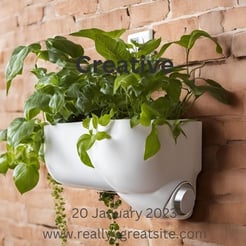
No-Bend Gardening Hacks for People with Limited Mobility
Join us to learn the best no-bend hacks to keep gardening enjoyable for people of all mobility abilies.
ACCESSIBILITY
Gardening is for everyone!
Gardening brings joy, purpose, and connection with nature, but for those with mobility issues, back pain, or joint problems, the constant bending and kneeling can turn this pleasurable activity into a painful challenge. Fortunately, with some thoughtful adaptations and clever tools, you can continue to nurture your green space without the physical strain. Here are practical, no-bend gardening solutions that keep your garden thriving while protecting your body.
Raised Beds and Containers
The foundation of accessible gardening starts with bringing the plants up to you:
Elevated garden beds: These waist-high structures eliminate the need to bend down. Look for beds that are 24-36 inches tall, depending on your height and whether you'll be sitting or standing.
Table gardens: Similar to raised beds but designed like tables with space underneath for wheelchairs or chairs.
Vertical gardens: Wall-mounted planters or tiered structures that allow you to tend to plants at eye level.
Container gardening: Large pots placed on stands, tables, or wheeled platforms bring plants to a comfortable working height.
For those who cannot build or collect their own, here are some suggested investments for your accessible home garden:








Essential Long-Handled Tools
The right tools can dramatically reduce the need to bend:
Extended-reach cultivators and weeders: These allow you to loosen soil and remove weeds while standing. Try these: https://amzn.to/41ELJyF
Long-handled pruners and fruit pickers: Perfect for maintaining trees and shrubs without stretching or climbing. These are a cost effective choice: https://amzn.to/41K8amg
Garden grabbers/reachers: Use these to pick up fallen fruit, plant materials, or tools without bending. I use these both indoors and outdoors: https://amzn.to/41qLTZs
Standing bulb planters: These clever devices let you plant bulbs with a simple foot press
This one is handy!: https://amzn.to/4bql8Jf
Watering wands: Extend your reach to water hanging baskets and distant garden areas.
I found this one: https://amzn.to/41KwmVy
Smart Garden Planning
Thoughtful design can minimize mobility challenges:
Wide, stable pathways: Create pathways at least 36 inches wide with firm, level surfaces for safe navigation.
Strategic plant placement: Group plants with similar watering and care needs together to minimize movement around the garden.
Drip irrigation systems: These deliver water directly to plants, reducing the need to carry watering cans or move hoses. Try this one: https://amzn.to/3X9W8Ql
Self-watering containers: These require less frequent attention and eliminate heavy watering tasks. Try these: https://amzn.to/4hQRWNO








Adaptive Techniques
Working smarter, not harder, makes gardening more accessible:
Gardening trolley seats: These rolling seats with storage underneath allow you to scoot along your garden beds without standing up or bending down. Try this one: https://amzn.to/4kooiBe
Garden kneelers with handles: While they do require some lowering, the handles provide crucial support for getting up and down safely. Try this one: https://amzn.to/3EAAwWP
Leverage pruning techniques: Annual pruning to keep plants compact means less reaching in the future.
Plant selection: Choose low-maintenance perennials and native plants that require less intervention
Innovative DIY Solutions
Sometimes the best solutions are homemade:
PVC pipe seed planters: Create a simple tube with handles that allows you to drop seeds into the ground without bending.
Tool organization stations: Place these strategically throughout your garden to minimize trips back and forth.
Pulley systems for hanging plants: Install pulleys to lower hanging plants for maintenance and raise them back up afterward.
Repurposed household items: Old brooms can become tool handles, and kitchen tongs can serve as reachers for light garden tasks.




Embracing Community Resources
Don't overlook help from others:
Garden buddies: Partner with friends or neighbors for tasks that remain challenging.
Community garden plots: Many community gardens now offer accessible raised beds.
Master gardener programs: These often have volunteers who can advise on accessibility adaptations.
Check out the many organisations which are there to enable those with disablities to continue gardening:
https://www.rhs.org.uk/advice/health-and-wellbeing/gardening-with-a-disability
Conclusion
The joy of gardening should be available to everyone, regardless of physical limitations. With these no-bend approaches, you can continue to experience the satisfaction of growing plants and creating beautiful outdoor spaces. Remember that adapting your garden is a process—start with the methods that address your most significant challenges, then gradually implement additional ideas as you discover what works best for your specific needs and garden space.
By focusing on these accessibility strategies, you can maintain your gardening passion while protecting your body, proving that with a bit of creativity and the right tools, gardening can remain a fulfilling lifelong activity.
